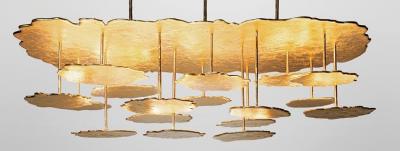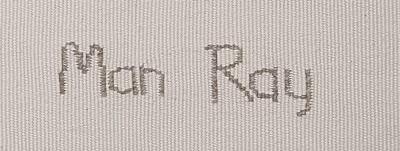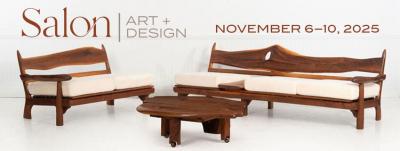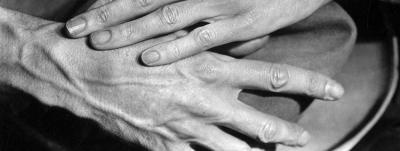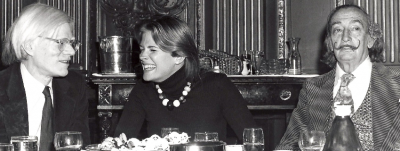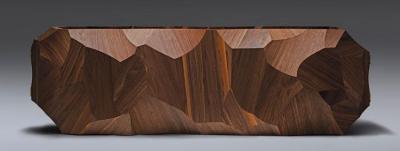The Connecticut River Valley & the China Trade
This archive article was originally published in the Summer/Autumn 2006 issue of Antiques & Fine Art magazine.
Western merchants have always been attracted to the products of China and the profits of trade with the Orient. The earliest trade with the Chinese was in the second century b.c. across the “Silk Road,” a network of trails named for the precious Chinese cloth that formed the most valuable and abundant commodity transported across it. After Portugal forged sea routes to China in the mid-sixteenth century, other foreign nations sailed there in search of trade. The English East India Company, established in 1600, soon dominated the China trade. At first, spices were the main attraction, but as the seventeenth century progressed, merchants sought new commodities such as tea.
The British prevented Americans from entering into direct trade with China until after the end of the Revolution in 1783. Britain needed the American colonies as a market for its own manufactured goods and for the porcelains, silks, and teas brought back from the East by the English East India Company. Prior to the Revolution, limited quantities of Chinese trade goods, including porcelains, appeared in the Connecticut River Valley by way of Hartford, Boston, and New York. While the majority of Connecticut Valley residents selected English ceramics for their finer tea and tablewares, a few Connecticut Valley families were able to afford Chinese porcelains; the quantities they owned indicated their degree of wealth and status. Called the “Mansion People,” this group occupied the majority of religious, military, and civic positions in their communities, or were prominent merchants and physicians.

- Canton Waterfront with Steamer Spark, Studio of Tingqua, Guan Lianchang (b. 1809, active dates 1840–1870), Canton, China. ca. 1855. Gouache on pith paper, wood, and glass. Chinese laborers loading tea onto boats anchored on the Pearl River. The foreign factories at Canton in the distance are as seen from the island of Honam. 60.215.
In 1784, five months after the official end of the Revolutionary war, the Empress of China, America’s first vessel to travel to China, departed New York harbor loaded with a variety of outbound cargoes, such as ginseng, furs, and silver coins, selected to entice Chinese merchants. The ship returned filled with teas, silks, porcelains, and lacquerwares, spurring future trading with China. Although English trade goods continued to predominate in the Valley market, the post- Revolution years saw an increase in the availability of imports from China, despite limited direct trade. A few Valley merchants took shares in ventures and supplied outbound ships with trade commodities, while others traveled to Canton from the ports of Boston, New York, and New Haven. Many of those early adventurers brought exotic decorative arts back to their families, friends, and the local market.
The Canton Connection: Art and Commerce of the China Trade, 1784–1860, an exhibition featuring over 120 objects from Historic Deerfield’s Asian art collection, focuses on trade activity and relationships between American and Chinese merchants in the eighteenth- and nineteenth centuries. The exhibition also explores the role of trade between China and rural New England communities, dispelling the myth that the China trade was exclusively an urban, coastal phenomenon. The stories of Connecticut River Valley merchants, sailors, captains, and wives involved in ventures to China are examined through advertisements, diaries, letters, and actual objects brought home.
The Connecticut River formed a vital economic link for the towns along it, yet navigation of the river was not easy. The channel itself was shallow, averaging a depth of only 5-1/2 feet from Middletown to Hartford, and three months out of the year ice blocked the river. Sea-going vessels could navigate the Connecticut only as far north as Hartford.
This plate (one of a set of nine) belonged to a member of the Williams or Stoddard families of Northampton, Massachusetts. These two families were among the most prominent dynasties of western Massachusetts. This pattern appears to have enjoyed some popularity in the New England colonies as well as in Maritime Canada.
Charles Phelps Jr. (1744–1814) and his wife Elizabeth Porter Phelps (1747–1817) of Hadley, Massachusetts, owned this punch bowl. They married in 1770, and resided at Elizabeth’s family house and farm called “Forty Acres,” now known as the Porter-Phelps-Huntington House Museum, in Hadley, MA. Their son, Charles Porter Phelps (1772–1857) used the bowl to furnish his new house, completed in 1814, across the street from his parents’ residence.
Ginseng is an aromatic root that the Chinese believe to have medicinal properties. As one of the few products that the Chinese accepted in trade for their precious goods, the plant played an important role in the early years of America’s direct trade with China. Ginseng grows in the deep shade of mature hardwood forests from southern Canada to central Alabama, and from the East Coast to slightly west of the Mississippi.
The Empress of China took thirty tons of ginseng as part of its cargo on the first voyage to China, which it exchanged for black and green teas, silks, nankeens, and chinaware. Connecticut River Valley merchants quickly siezed upon this new interest in ginseng and often secured this outbound cargo for New York and Boston shipowners. In 1787, Jeremiah Wadsworth, merchant of Hartford, contracted with several country merchants in Massachusetts and Vermont for ginseng. William Moore of Greenfield, Massachusetts, supplied him with 800 pounds, and Zebina Curtis of Windsor, Vermont, sent over two tons of the root. By the early nineteenth century, New England ginseng had glutted the Chinese market, making it relatively worthless.
The Chinese export teawares owned by the family of Asa Stebbins (1767–1844) of Deerfield, Massachusetts, are typical of the severe neoclassical style prevalent in the last decades of the eighteenth century. Asa Stebbins made his living as a farmer and mill owner, and served as a town selectman and Massachusetts state representative. The Stebbinses were one of a group of families that rose to prominence in the Connecticut River Valley after the Revolutionary War.
The most popular and plentiful pattern in Chinese export porcelain for the American market was the “Canton” pattern. The pattern’s lack of complexity meant that enamelers could complete the design quickly. The quality of Canton varies greatly from finely rendered to pitted, coarse, and sloppily decorated. This platter was owned by Joel Hall (1771–1850) and his wife Lucretia Street Hall (1773–1851), who operated a tavern in Charlemont, Massachusetts, from 1807 to the 1840s.
Early American voyages to China often amounted to single ventures that enlisted the capital of several investors and entrusted a business agent with the economic transactions. At the conclusion of the voyage the group of financiers usually disbanded. As trade with China grew, resident trading firms were established in Canton; such firms had the advantage of being better acquainted with the Chinese methods of business and more familiar with current market conditions than were most ship’s agents.
Samuel Wadsworth Russell (1789–1862) of Middletown, Connecticut, became the most well-known China trade merchant of the Connecticut River Valley. In 1819, Russell arrived in Canton as a partner with a group of Providence, Rhode Island, merchants. For the next five years he oversaw sales of goods from Providence and purchased Chinese products for the home market. In 1824, Russell formed a partnership with John Cushing and Philip Ammidon to establish the commission house of Russell and Company. The firm established relationships with India’s Parsi opium growers, successfully breaking Britain’s monopoly on the drug trade in China. Russell and Company continued in business for more than a century, primarily selling opium in exchange for teas, silks, porcelains, camphor wood, carved ivory, and spices.
Perhaps Russell’s greatest impact on Middletown was his home, built on the fortune he made in the China trade. Russell’s wife Frances commissioned the New Haven architect Ithiel Town to design the house in the fashionable Greek Revival style. Completed in 1830, the house was dubbed the “China Palace” by irreverent neighbors. The Russell family decorated the house with teakwood furniture, lacquerware, and Chinese porcelain, several being gifts from the Chinese hong merchant, Houqua. After his return to Middletown, Russell used the fortune he had made in the China trade to found the Russell Manufacturing Company, which made cotton webbing for hoop skirts, lawn chairs, and most recently, drivebelts for computers.
While many Connecticut Rver residents enjoyed Chine trade goods and commodities, very few of them had direct knowledge or immediate contact with the Chinese. Leaving her home and four young children in Northampton, Massachusetts, Caroline Hyde Butler (1804–1892) accompanied her husband, Edward, on a trip to China in October 1836. Thirty-two years old at the time, she was one of the few Western women to see China before the middle of the nineteenth century. She kept a journal of her trip filled with her observations of life onboard the Roman and the social customs of the Chinese. The restriction against foreign women in Canton meant that Caroline stayed in Macao during her time in China.
Caroline’s journal describes a life filled with leisure time due to a great number of servants, but of tedium and little variety. The inhabitants of Macao were both fascinated and repulsed her. Like many Westerners, Caroline was intrigued by the Chinese custom of foot binding; commenting that “…Chinese lovers compare this unsteady gait in their mistresses to the graceful moving of the willow.” She also observed the pathetic condition of Chinese beggars, “The New York beggars are really kings when their appearance is contrasted with these miserable beings.” After almost two months in Macao, Caroline rejoined the ship bound for home. Several souvenirs of her adventurous voyage are still owned by her descendants.
This extraordinary miniature stand, which seems to have no functional purpose, was produced as a novelty or curiosity. The “whatnot” shelf or shelved stand with turned pillars at each end copied a favorite mid-nineteenth century furniture form made for holding curios and displaying decorative objects. This piece has many delicately carved ivory wineglasses, covered sugar bowls, candlesticks, goblets, and vases, which are pegged into place on the shelves.

The Canton Connection: Art and Commerce of the China Trade, 1784–1860 was on view in the Flynt Center of Early New England Life at Historic Deerfield from fall to December 31, 2006. A symposium on The Decorative Arts of the China Trade is scheduled for September 15–17, 2006. The accompanying exhibition catalogue, Chinese Export Art at Historic Deerfield, authored by Amanda Lange, is available through Historic Deerfield’s Museum Store by calling 413.775.7170. For further information about the exhibition, call 413.775.7214 or visit www.historic-deerfield.org.
This article was originally published in the Summer/Autumn 2006 issue of Antiques & Fine Art magazine. AFA is affiliated with Incollect.
Amanda Lange is curator of historic interiors at Historic Deerfield, Inc., Deerfield, Massachusetts.
Unless otherwise noted, photography provided by Penny Leveritt.






























